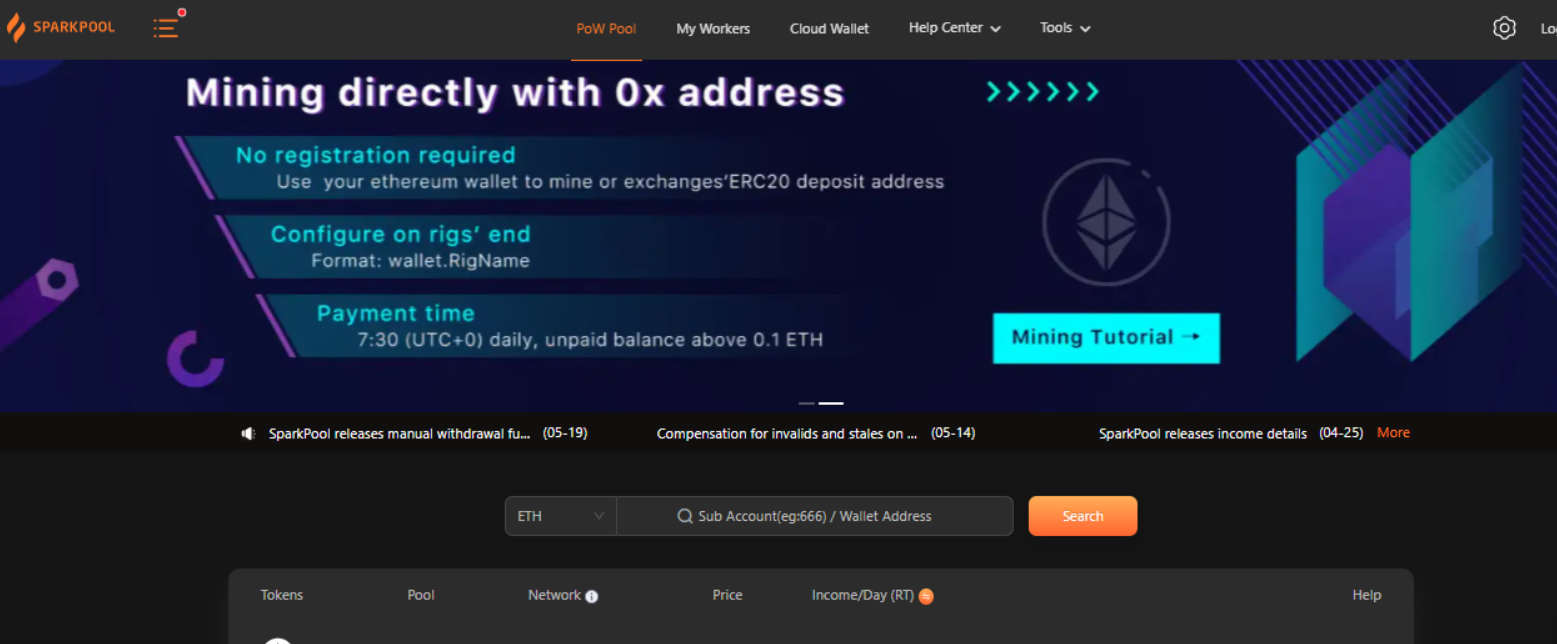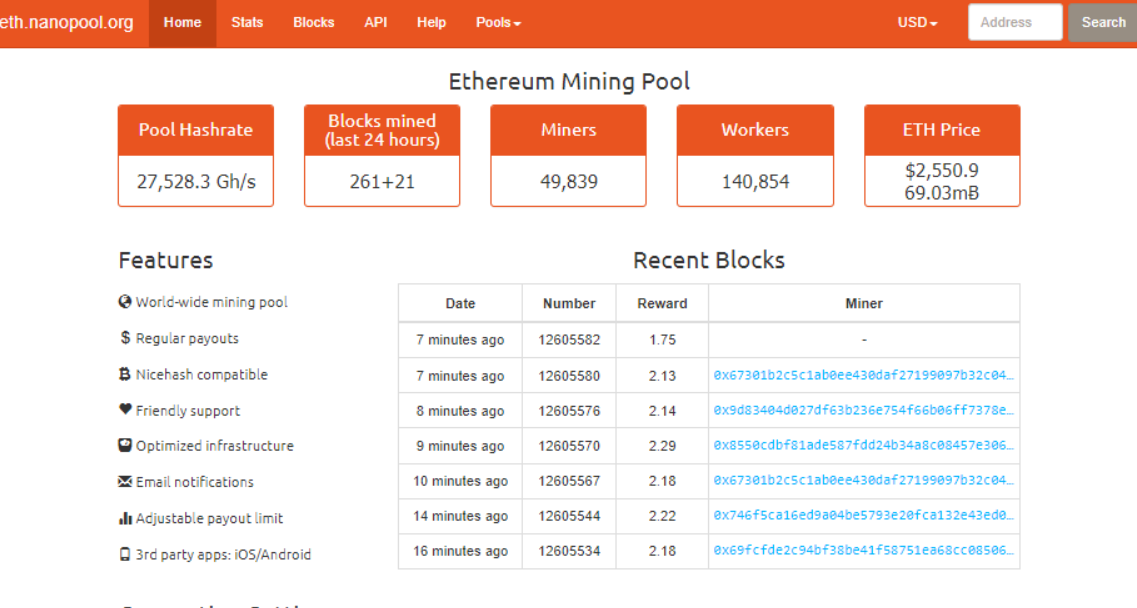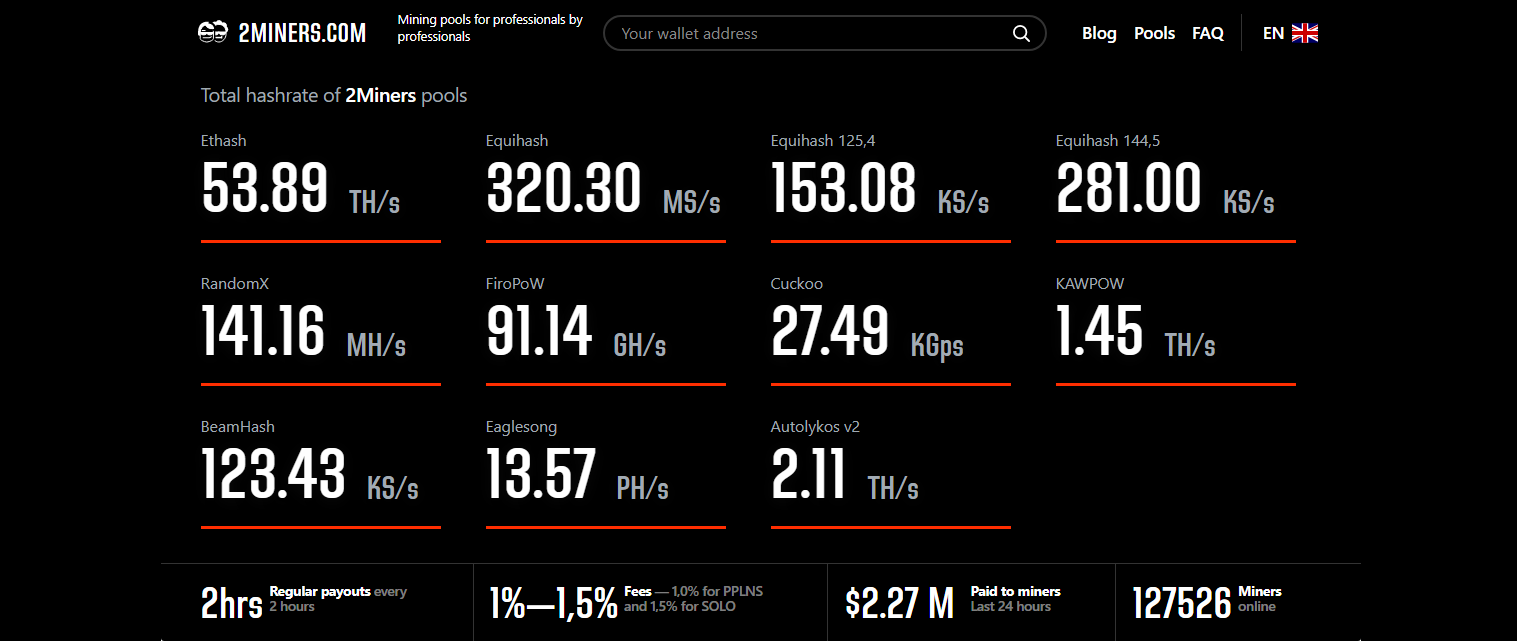While Bitcoin mining is an incredibly popular method of passive income, there’s also profit to be found in Ethereum mining via Eth Pools. Doing the task alone, however, is never a good idea. It’s best to join ETH pools. This post will break down the best ones available to you.
Got something to say about mining pools or anything else? Write to us or join the discussion in our Telegram channel. You can also catch us on Tik Tok, Facebook, or Twitter.
What is an ETH Pool?
An Ethereum (ETH) pool is a group of cryptocurrency miners looking to combine their computer power to mine blocks together, splitting the mining reward amongst each other. This is an alternative to going it alone, where you’re competing against the entire mining world all by yourself with no guarantee of a reward.
SponsoredHow Long Does it Take to Mine 1 Ethereum?
How long it takes to mine 1 Ethereum depends on various factors. For one, your hash rate – AKA how powerful your computer is – is very important. The higher the hashrate, the faster you are.
Then, it depends on if you’re participating in a mining ETH pool or going it alone. If you’re doing the latter, you’ll want a lot of GPUs to combine their power and stand a chance against the rest of the miners. Otherwise, the length of one block validation will depend based on how many miners are contributing to the pool.
As of this writing, however, it takes around 91.8 days to mine Ethereum if you’re doing it by yourself with an average hashrate.
Is Ethereum Mining Profitable?
Mining Ethereum is currently profitable, yes. However, the profitability of such an asset will vary as time goes on, and network difficulty goes up. Such a factor will also differ based on how many miners are participating at once. If there are more miners, you’re up against more competition.
That’s not to mention that Ethereum is eventually moving to a proof-of-stake consensus algorithm. This gets rid of mining entirely, favoring a new method called staking. You can still profit from staking, of course, but the process is quite different from mining.
Of course, the older Ethereum blockchain will still be around. As for its profitability, it’s hard to say until it happens. Such a metric will vary based on the amount of people still using the network.
How do I Profit from Eth Pools?
There’s no unanimous way to earn from mining Ethereum. Instead, different platforms may offer various payment schemes. The most common are Pay Per Last N Shares (PPLNS) and Pay Per Share (PPS). Shares are how much you contribute to a specific block.
PPLNS
- Payment based on the number of shares contributed by the miner.
- Essentially, how much you have contributed to the block that was mined.
- However, the N is a set number based on the platform.
- For example, if the N is 40,000, your payment is based on your contribution to the last 40,000 shares.
PPS
- Pay per share is much simpler than PPLNS.
- Every share one submits is just worth a preset amount of ETH.
What is the Best ETH Pool?
Now that you’re aware of what an ETH pool is, let’s get into the best ETH pool out there. This Ethereum pool list will compare and contrast the different platforms for you to try out – each with their own pros and cons.
Ethermine

Ethermine claims to be the “world’s highest performing Ethereum mining pool.” While we’ll certainly challenge that claim on this Ethereum pool list, there’s no denying that Ethermine is a great place to start.
Pros
- For one, Ethermine allows for entirely anonymous mining.
- This is ideal for miners who emphasize privacy.
- On top of this, the platform only takes a 1% block reward fee.
- This allows you to walk away with more of your share whenever a block is mined.
- In that same vein, Ethermine offers instant payouts as well as servers in the United States, Asia, and Europe.
- The platform supports PPLNS rewards.
- You can customize your minimum payout threshold, and utilize Ethermine’s top-tier helpdesk for queries.
- Finally, Ethermine features apps on the iOS and Android stores, as well as Telegram messengers.
- Through these apps, you can look at detailed statistics containing all recently mined blocks, hashrate based on server, blocks mined per day, and the difficulty variation throughout each day.
Cons
- Limited time access per internet IP.
- Doesn’t have multiple mining systems.
- Does not support merged mining.
- Does not support Vardiff.
SparkPool

SparkPool is a Chinese mining pool with quite the positive reputation. The platform has servers and nodes based all around the world, and have top security measures in place for protecting your information.
Pros
- Wondering about profit? You can calculate your potential daily income via a built-in calculator on SparkPool’s homepage.
- Even better, there’s an onsite tutorial for learning – ideal for users reading this guide!
- Tutorials are features many on this Ethereum pool list are lacking.
- SparkPool also has an application for Android and iOS devices.
- You can view your hashrate, rewards, and even withdraw rewards via this app as you’d prefer, as all assets are stored in a cloud wallet for easy access.
- SparkPool also features 24/7 customer service to solve any of your problems.
- This ETH pool prides itself on constantly working to develop and advance its technologies for a better user experience.
Cons
- Doesn’t support Bitcoin mining pools.
- Much information about the creator(s) is unkown.
- Only available in Chinese and English.
NanoPool

NanoPool is one of the most well-known of the best ETH pools out there. It’s great for newer users as it supports a lower hashrate than others may require, for instance.
Pros
- NanoPool has servers based all around the globe.
- This means there’s access to the mining pool for all.
- NanoPool only charges a 1% fee and features a PPLNS payment scheme, that resets every twenty minutes.
- This means you can enjoy multiple payouts every day if you’re a dedicated miner.
- Similar to SparkPool, NanoPool offers a step-by-step guide for beginner miners to take advantage of.
Cons
Sponsored Sponsored- Only supports seven cryptocurrencies.
As of this writing, NanoPool is charging higher transaction fees than normal as Ethereum is incredibly congested. Make sure to keep that in mind before starting.
2Miners

2Miners is an altcoin mining pool for GPUs and ASICs and serves both beginners as well as professionals. You can receive your pay in BTC, ETH, or XNO.
Pros
- Supports several altcoins, including ETH, ETC, EXP, MUSIC, ETP, PIRL, WHL, DBIX, BTG, ZEC, ZCL, ZEN.
- 2Miners will be switching to Nano (XNO) for payouts.
- Popular in the US, Europe, and Asia.
- PPLNS shares of 1,000,000 for Ethereum PPLNS Pool.
Cons
- 0.1 ETH minimum payout.
- Does not support smart mining.
- Does not support merged mining.
Ethereum 2.0 on the horizon
Despite the eventual move to Ethereum 2.0, Ethereum mining is a fantastic way to create some passive revenue. An ETH pool makes the process easier than ever, and getting involved with just a slightly powerful GPU is entirely possible.
< Previous In Series | Mining | Next In Series >

